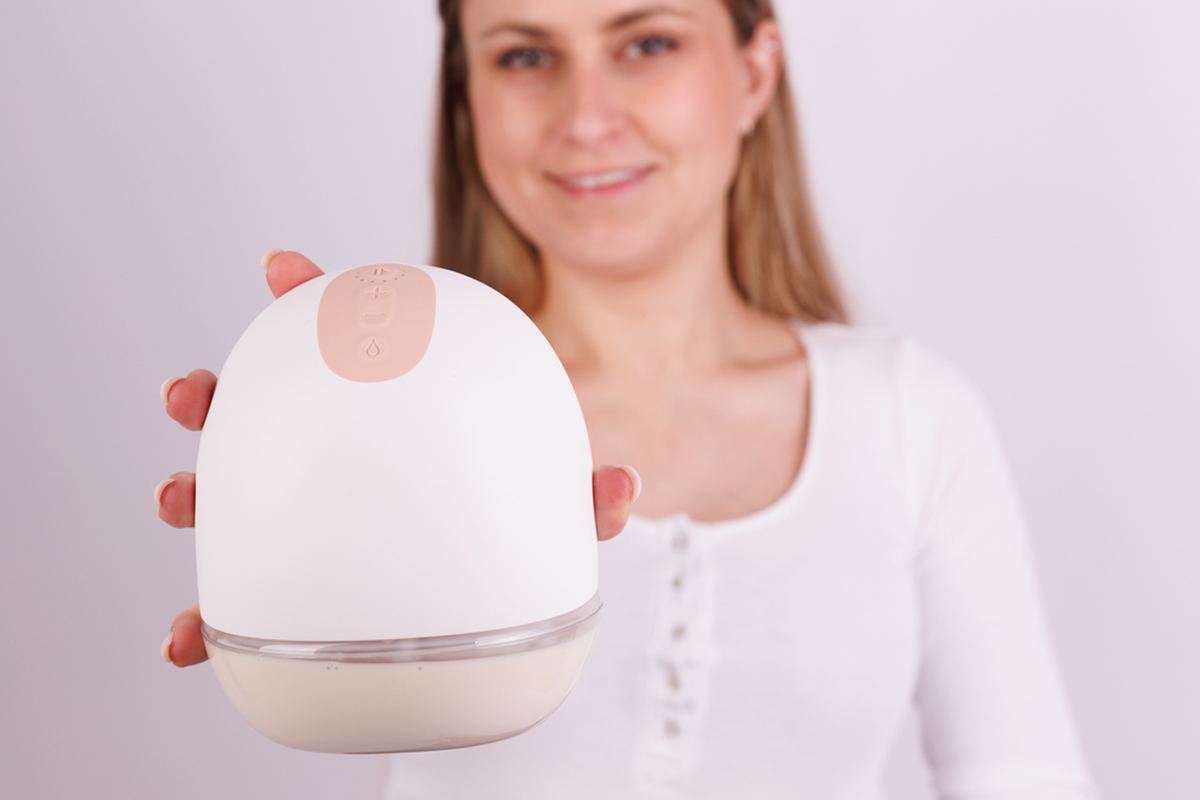Breastfeeding can be a beautiful experience, but it sometimes comes with unexpected challenges. If you've encountered breast discomfort while nursing, you're probably wondering what's going on. Could it be engorgement, or could it be something more serious like clogged ducts or mastitis? Don't worry – we've got you covered. In this article, we'll break down the key differences between these common breastfeeding issues, helping you identify what you're dealing with and how to find relief. Whether you're a new parent or a seasoned pro, understanding these conditions is crucial for a smoother breastfeeding journey. Ready to become a breast health expert? Let's get started!
What is breast engorgement?
Breast engorgement occurs when your breasts become overly full of milk, resulting in swelling, firmness, and discomfort. This common breastfeeding challenge typically happens as your milk transitions from colostrum to mature milk, usually 2-5 days after giving birth, when milk production is increasing very fast. But engorgement can happen at any stage of breastfeeding if there is more milk than your breasts can hold.
Possible factors
- You are separated from your baby for longer stretches than usual between feeding
- Your baby is sleeping longer at night
- Your baby is teething, has a stuffy nose and doesn't want to be fed
Signs of breast engorgement
You may experience:
- Hard, warm, and painful breasts
- Flattened nipples
- Difficulty for your baby to latch
Prevention tips
To prevent engorgement try:
- Breastfeeding frequently (every 2-3 hours) - to keep the breasts as comfortable as possible
- Ensuring a proper latch and experimenting with different feeding positions - it helps to drain different areas of the breast
- Avoiding pacifiers in the early weeks
Treatment options
Treat engorgement as soon as possible to avoid developing mastitis. Try these remedies:
- Apply cold compresses on the affected area/s between feedings - some communities advise mothers to use heat instead of cold in the early weeks after birth, both can work. Just make sure you don’t use too much heat, it might increase the inflammation
- Gently massage your breasts
- Rest as much as you can
- Express just enough milk to soften the breast
💡 If symptoms persist, consult a healthcare provider or lactation expert for guidance. Remember, proper management can help prevent complications like mastitis.
What is a clogged milk duct?
A clogged milk duct occurs when milk becomes trapped in a breast duct, causing a painful lump.
Symptoms of a clogged milk duct
The most common symptoms of a clogged milk duct include:
- A tender, sore lump or knot in the breast
- Redness and warmth around the lump
- Breast pain or discomfort during feedings
Prevention tips
To prevent clogged ducts, try these strategies:
- Fully empty breasts during feedings
- Avoid tight-fitting bras
- Stay hydrated
- Vary your nursing positions
Many ask, does sunflower lecithin increase milk supply? While its primary benefit is reducing clogged ducts by decreasing milk stickiness, probiotics may also help.
Treatment options
If you develop a clogged duct:
- Continue breastfeeding or pumping frequently
- Apply cold compresses between feedings
- Gently massage the lump while feeding
- Take over-the-counter pain medication if needed - ibuprofen and paracetamol both are safe to take while breastfeeding - ibuprofen is more useful for mastitis because it reduces inflammation
💡 Most clogs resolve within 24-48 hours. (1) If symptoms worsen or persist, contact your healthcare provider, as it could lead to mastitis.
What is mastitis?
Mastitis is an inflammation of breast tissue. It's a common condition affecting about 10% of breastfeeding individuals in the US. (2) Recognizing the signs of mastitis is crucial for prompt treatment.
Symptoms to watch for
Potential symptoms you may experience with mastitis include:
- Breast swelling, redness (often in a wedge shape), and tenderness
- Warmer, harder, lumpier breast than usual
- Pain or a burning sensation while breastfeeding
- Flu-like symptoms such as:
- Chills
- Headache
- Fever
Preventing mastitis
To help prevent mastitis, follow these tips:
- Fully drain milk from your breasts during feeding sessions
- Vary breastfeeding positions
- Ensure a proper latch to facilitate complete milk removal
- Avoid tight-fitting bras that can restrict milk flow
- Promptly treat sore or cracked nipples to prevent infection
- Do not limit feeds
Treatment options
If you suspect mastitis, consider the following steps:
- Continue breastfeeding or pumping to keep milk flowing and prevent further buildup.
- Apply cold compresses to the affected breast before nursing or pumping to help loosen the blockage.
- Take over-the-counter pain relievers like paracetamol or ibuprofen to alleviate discomfort and reduce inflammation.
- If symptoms persist or worsen after 24-48 hours, consult your healthcare provider promptly. They may prescribe antibiotics to clear the bacterial infection and prevent potential complications like breast abscesses.
- While recovering, get plenty of rest and stay hydrated to support your body's healing process.
- Seek guidance from a lactation consultant if needed for proper breastfeeding techniques and management strategies.
- Let your doctor know if you are still not feeling any better by the third day after starting antibiotics
Key differences between engorgement, clogged milk duct and mastitis
Engorgement vs. clogged milk duct
Breast engorgement occurs when your breasts become overly full and swollen with milk. This typically happens during the early stages of breastfeeding or after missed feedings. Engorged breasts feel hard, tight, and painful to the touch. The entire breast is affected, and the skin may appear stretched and shiny.
A clogged milk duct, on the other hand, results in a localized, painful lump in a specific area of the breast due to a blockage in one of the milk ducts. The lump may be tender and cause a wedge-shaped area of redness on the breast.
Performing a simple yet impactful breast massage for clogged ducts can help relieve the blockage and improve milk flow.
Engorgement vs. mastitis
While engorgement affects the entire breast, mastitis is an inflammation of breast tissue.
Mastitis causes more severe symptoms, including redness, swelling, and flu-like symptoms such as fever, chills, body aches, and fatigue. The affected area may appear red and wedge-shaped, and the breast may feel warm to the touch.
💡 Engorgement typically resolves with frequent nursing or pumping to remove excess milk, whereas mastitis often requires medical treatment, including antibiotics.
Clogged milk duct vs. mastitis
A clogged milk duct can sometimes progress to mastitis if left untreated. The key difference is that mastitis involves inflammation and potential bacterial infection, leading to more severe symptoms beyond just a localized lump.
With a clogged duct, you may experience a painful lump and some redness or swelling in that area, but no fever or flu-like symptoms.
A sudden drop in milk supply can also be a sign of a clogged duct or mastitis. If you experience persistent pain, redness spreading beyond a localized area, or a fever, consult a healthcare provider promptly. These could be signs that a clogged duct has developed into mastitis, requiring antibiotics and additional treatment.
Can a clogged duct or abscess lead to mastitis?
From clogged duct to mastitis
If a clogged duct persists, bacteria can multiply in the stagnant milk, potentially causing mastitis. This condition is characterized by more severe symptoms such as fever, flu-like symptoms, and redness in the affected breast.
💡 It's crucial to address clogged ducts promptly to prevent this progression.
From mastitis to abscess
An abscess can occur in a small pourcentage of mastitis cases. The abscess is a swollen area of pus and bacteria walled off within the breast. It might need to be drained with a needle aspiration. In addition, antibiotics is required.
💡 You can continue breastfeeding on the affected breast, which can be valuable in decreasing inflammation.
As you navigate the ups and downs of breastfeeding, understanding these common issues can make a world of difference. By recognizing the signs of engorgement, clogged ducts, and mastitis early on, you're better equipped to tackle them head-on, and avoid abscess. Remember, your body is doing incredible things, and it's okay to face challenges along the way. With the right knowledge and support, you can overcome these hurdles and continue your breastfeeding journey with confidence. Don't hesitate to reach out to a lactation consultant or healthcare provider if you need extra guidance. You've got this – your body and your little one will thank you for your dedication and perseverance.
Sources:





